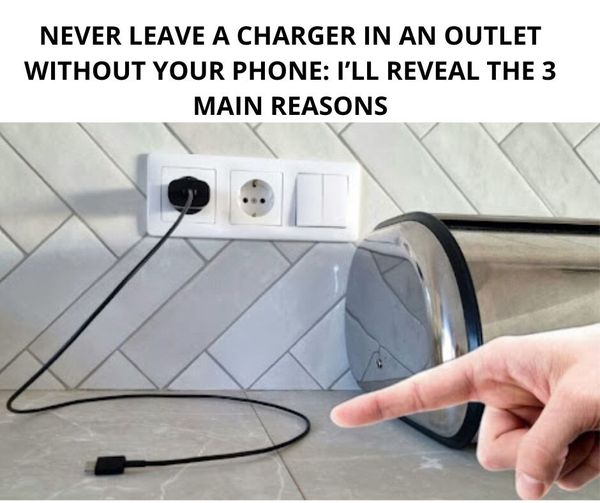ADVERTISEMENT
Chargers, like any electrical device, are susceptible to voltage fluctuations caused by power surges or lightning strikes. While modern chargers are equipped with built-in safety features such as overcurrent protection and thermal cutoff switches, they are not immune to failure under extreme conditions. A malfunctioning charger or a faulty electrical outlet can exacerbate the risk of fire, especially if combustible materials are nearby.
Electrical Safety Concerns:
For households with young children or pets, a plugged-in charger with a dangling cord presents an additional hazard. The risk of electric shock is palpable if these curious beings decide to tamper with or chew on the exposed cords.
Children, in particular, are naturally inquisitive and may not fully comprehend the dangers posed by electrical outlets and cords. Unsecured chargers and loose cables increase the likelihood of accidents, ranging from minor shocks to more serious injuries. Similarly, pets, with their penchant for chewing on objects, can inadvertently damage chargers or expose themselves to electrical hazards.
Preventive Measures:
To navigate these risks and ensure a secure charging environment, it’s crucial to implement the following preventive measures:
Unplug when Not in Use:
Breaking the habit of leaving chargers plugged in when not actively charging devices is a simple yet effective action. Not only does it reduce energy consumption, but it also mitigates the risk of overheating and potential fire hazards.
Regular Inspection:
Taking a moment to regularly inspect chargers for signs of wear or damage is paramount. Identifying issues early on can prevent potential hazards and prolong the overall lifespan of your chargers.
Out of Reach:
Safeguarding against potential electrical accidents involves keeping chargers and their cords out of reach of children and pets. This small adjustment can significantly enhance the safety of your home environment.
Use Smart Charging Solutions:
Consider investing in smart charging solutions that automatically shut off power to devices once they are fully charged. These devices, equipped with advanced power management features, help reduce standby power consumption and minimize the risk of overcharging.
Conclusion:
By shedding light on the often-overlooked risks associated with leaving chargers plugged in unnecessarily, we empower ourselves to make informed choices that prioritize safety and sustainability. Implementing these preventive measures not only mitigates potential hazards but also contributes to the extended durability of our trusted chargers, ensuring they continue to serve us reliably for years to come.
